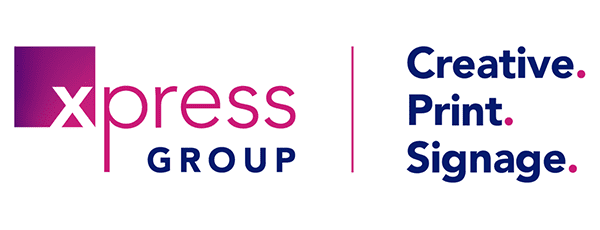
07 Feb How to Spec and Buy Print
Mastering the Art of Print Buying: Your Guide to Crafting the Perfect Print Specification
Is printing complicated?
Well, perhaps. It can be. Several variables are involved, and, as with so many business areas, there’s a degree of industry terminology going on.
Here’s something important to know:
When it comes to marketing, you have a story to tell. How would you like to tell it? Every choice you make can say something meaningful about your brand. Knowing what you need for your print project helps us support your business in the best way we know how.
We’ve compiled this helpful checklist for those new print-buying and experienced buyers alike. It’s a “how to” blueprint for your brochures, leaflets, flyers, banners – anything involving digital or litho printing.
Welcome to Our Ideal World
Having all the relevant details as early as possible in the production process really works well for the Xpress Group team. And no doubt for you, as well. Both sides know what to do, how to do it and what to expect.
We’re in our respective lanes and pleased to be there. Everyone wins, and the outcome is a super-smooth transaction. Your marketing collateral will be on its way: entirely fit for purpose, delivered on time and within budget.
What Exactly IS a Print Spec?
For the removal of doubt, it’s the unique characteristics of your project.
In other words, what your printer needs to know to quote accurately and to produce your work. The more precise and complete the spec is, the better we can understand and “see” your vision and objectives.
Equally, with a full picture, we may be able to suggest ways to save time and/or costs.
Your Spec, Made Simple
We’d love for you to tell us what you want. But, as always, ask us for advice – we’re print specialists and here to help.
A Project Name. First things first, although it sounds obvious. A project name makes your work easier to refer to and find.
Description. The scope of the work, the type of printing you need and why, your objectives, how you see the finished product, etc.
Due date. When do you need it by? We’ll work backwards from your deadline.
Size. Flat and finished. This is a basic yet vital specification As in, what should be the dimensions unfolded, folded and/or bound?, We need to know the width and height.
Ask Xpress Group for jargon-free guidance about the best paper sizes for your business needs: A1, A2, A3, A4, A5 and so on. Our sophisticated technology, specialising in large-format printing, offers you a range of dimensions.
Page count. This will apply to bound newsletters, books, booklets, magazines and most brochures.
How many do you need? You don’t want to run short. On the other hand, too many wastes your investment with us and could result in storage space issues. Not least, obsolescence as your services and products may change.
Inks. For example, 1-colour, 2-colour, or 4-colour? If you’re after the latter, you’ll hear the acronym CMYK which stands for cyan, magenta, yellow and black. You can produce most colour applications to a good standard with these four colours.
Paper Type. What sort of impression would you like to make with your audience? Talk to Xpress Group about uncoated paper for a natural feel, gloss coated to make colours pop, or matt coated for a sleek, smart appearance.
Finishes. Lamination enhances durability, and embossing raises the paper’s surface for a classy 3-D appeal. Generally, you may associate varnishing with wood, but it is also used for paper. Varnishes can enhance magazine and brochure covers.
Binding. Consider saddle stitching – good for booklets with fewer pages; perfect binding works well for softcover books. It’s where the pages are glued together at the spine with a cover wrap. There’s also wire binding, which allows the document to lie flat when open.
Job format. How will you get your job file to us, and what platform are you using (eg Mac or PC)?
Shipping and Delivery. Where shall we deliver your printed work? Full supply, contact and any specific packing details will make things quicker and smoother.
Anything else? Tell your printer anything you think will be relevant to the job.
- Quick Tips
If you’re making a selection process, ensure that you give every business the same specs. - Specs can and do change, so talk to your printer about how this could or would affect the price and delivery date.
- Communicate! Don’t sit and wonder. We’d really like to hear from you. Ask us for our input and guidance. Clear, proactive contact will oil the wheels, and help to cement positive working relationships.
Every print job is customised, and you may need a deeper conversation to help you get started. Xpress Group invites you to get in touch to discuss your needs.
When it comes to your print spec, more is most definitely more.
